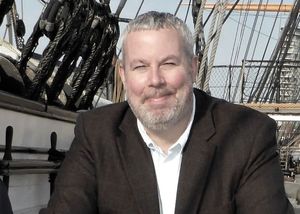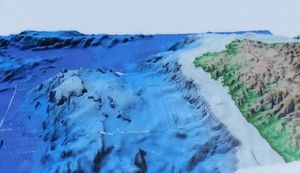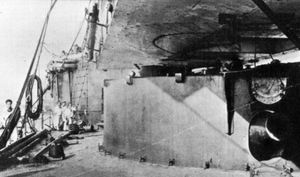With £30,000 University of Wolverhampton could finally identify long-lost shipwreck of HMS Captain
The University of Wolverhampton-led campaign to officially locate the long-lost HMS Captain is just £30,000 away from being able to send a vessel to the seabed to find her.
Lauded as the world's greatest warship when she entered service in 1870, the wrought-iron armour-clad steam-powered HMS Captain, with revolutionary swivelling gun turrets, capsized within months at sea.
The maritime tragedy saw 500 of the finest Royal Navy souls lost, and left the nation in mourning and in a state of shock due to embarrassment of building a ship with fundamental flaws which had been identified but ignored.
Lost to the Atlantic for 150 years, now the shipwreck is tantalisingly close to being officially found by Dr Howard Fuller from the University of Wolverhampton's History, Politics and Military History department.

Dr Fuller told the Express & Star: "We have had several breakthroughs in our campaign to find and explore the HMS Captain.
"There has been global interest in what we are doing after being featured on Dan Snow's History Hit podcast. The History Hit Channel really wants to get behind us and Dan wants to come on the expedition to the wreck when we go.

"And the more people who know about HMS Captain the more money our fundraising campaign gets. We now only need £30,000 to hire the Spanish salvage company who had all the equipment needed to prove whether the wreck, which we believe is the HMS Captain, is or not.
"There is a window in April, when the seas are calm enough for the expedition, but we just need that £30,000 to get the deal done. This will be great for the city of Wolverhampton."

Using a raft of historical sources, including evidence from the handful of men who survived the disaster and reports at the time, Dr Fuller pinpointed whereabouts the HMS Captain sank off Cape Finisterre, Spain.
However, in some of the most treacherous seas in the world, the seabed is littered with shipwrecks dating back through the centuries. Last year Dr Fuller was contacted by a Spanish research team who were told by local fishermen about their nets snagging on wrecks close to where Dr Fuller believes the HMS Captain sank.

He said: "We went on a joint expedition and found four wrecks in four hours, the last one was almost the exact dimensions of the HMS Captain. It is 150 metres deep, which is at the limits of the technology. However, at least it is not a few miles away in the continental shelf which would be almost impossible to reach.
"We are not blessed with a billionaire to back us, we are relying on people to donate to our fundraising campaign at www.findthecaptain.co.uk. This week I had an American man phone me who is descended from one of those sailors who died and he wants to donate so he can see this mission through to the end."
Dr Fuller, a 56-year-old American, believes the story of the HMS Captain has been airbrushed from British history and wants to right that wrong.
"This terrible, horrible story of the HMS Captain is waiting to be told. There is nothing like a shipwreck to fire the imagination of people.

"But this is not about finding treasure, it is about history - there are 500 bodies down there. So we want to send a camera down, but we are also working with the Royal Navy, and they have said take a 'look don't touch policy' which we will of course respect."
He added: "The Titanic is safe in history, we want to do the same for the HMS Captain."





